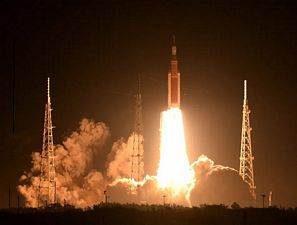Roger J. Wendell
Defending 3.8 Billion Years of Organic EvolutionSM



|
Click Here for my page about Deep Ecology... |

|
Click Here for my Extinction page... |
Although I do enjoy occasional bursts of loud music, or children's laughter, I mostly prefer quiet. For the most part I've always been perplexed as to why motorcycles* have to be so loud, why people insist on talking (ceaselessly) in deep wilderness, or why we have to constantly surround ourselves with random noise in general. Admittedly my little page isn't going to change a darn thing other than maybe help a few others realize they aren't alone when it comes to longing for more quiet. Yes, admittedly, the natural world can be considerably noisy at times but, surely, the sound of a few million birds flapping overhead or the wail of coyotes throughout the night is much more desirable than jet noise or screeching tires and sirens?My guess is is that our comfort with noise helps mask our fear of being alone. As evidenced by our smart phones, IM chats, or desire to be in a crowded stadium it's clear that the vast majority of us fear the experience of self-encounter that comes with being alone. The dread of being alone permeates our culture, society, and species in general - so much so that when we learn of the recluse, "loner," or contemplative we recoil in a combination of fear and mild disgust.
So, we fill our daily lives with activity (no matter how mindless) and noise. Our lives rush by in a blure of sound and sensation while real life passes us by. No, I'm not "holier than thou" for I, too, have had those same preoccupations with noise, crowds, and busyness. But, maybe, with a little awareness some of us can buck the trend and start seeking the solitude and contemplation that's our birthright. And maybe we can do it before it's too late as time is running out - for all of us...
*Motorcyclists often remind us that "loud pipes save lives." But, if that we're the case, wouldn't even more lives be saved if those noisy exhaust pipes pointed forward?

City Noise

How Loud is a Rocket Launch?

From a BBC.com article by Stephen Dowling on March 7th, 2023:
"When Apollo astronauts blasted off on their missions to the Moon, they did so with more than 3.2 miles (5.1km) separating them from the excited, onlooking crowds. Even at such distances, the noise was incredible. A common myth at the time was that the soundwaves from the Saturn V's engines were so powerful that they melted concrete on the launch pad and set fire to grass a mile (1.6km) away (both were false)."
"Nasa's measurements at the time captured the launch noise at 204 decibels. Compare that to the sound of a jet airliner taking off, which is between 120 and 160 decibels and considered dangerous to hearing if endured for longer than 30 seconds. Even 1.5 miles (2.4km) away, the noise from a Saturn V launch was recorded as being 120 decibels – as loud as a rock concert, or a car horn at very close quarters."
[170 decibels is the equivalent to 10 aircraft engines while 200 decibles is the equivalent of 10,000 engines...]

America's Quietest Places
National Park Service Natural Sounds and Night Skies DivisionBased on 1.5 million hours of acoustical monitoring, the blue regions on this map represent the quietest regions in the lower 48 American states. Researchers modeled sound levels across the country, including variables such as air and street traffic, from acoustic data fed into a computer algorithm. The map's deep blue regions, in places like Colorado's Great Sand Dunes National Park or Yellowstone National Park in Wyoming, have background noise levels lower than 20 decibels - a silence probably as deep as before European colonization, according to researchers. In most cities noise levels average 50 to 60 decibels, orders of magnitude noisier than these quiet areas. Humanmade noise is affecting wildlife, whose ears are up to 20 decibels more sensitive than human ears, because it drowns out the faint rustles of insects and rodents creatures like owls and bats need to hunt.

Nature Rx

Anechoic Chambers


|
Links: |
|
|

 Back to Roger J. Wendell's Home Page...
Back to Roger J. Wendell's Home Page...
Abbey |
About |
Blog |
Contacting
Me |
Copyright |
Disclaimer |
Donate |
Guest
Book |
Home |
Links |
Site
Index |
Solutions |
Terms,
Conditions
and
Fair
Use |
What's
Changed
or
New?
Copyright
© 1955 -